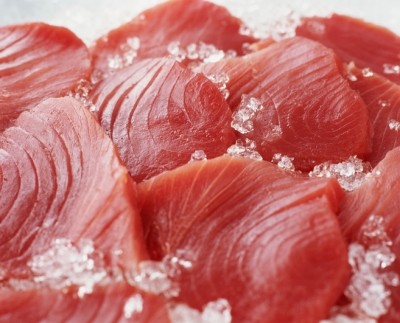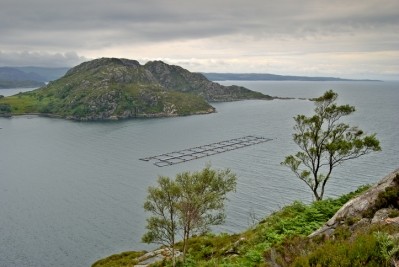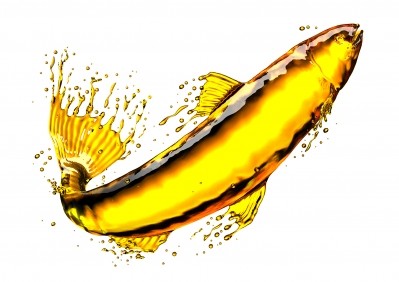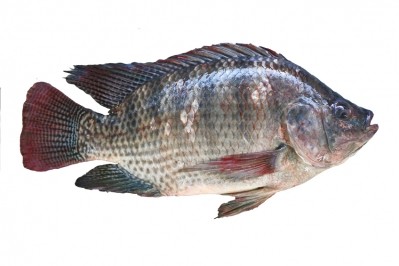Feeding tuna 'holy grail' for Illinois Soybean Association
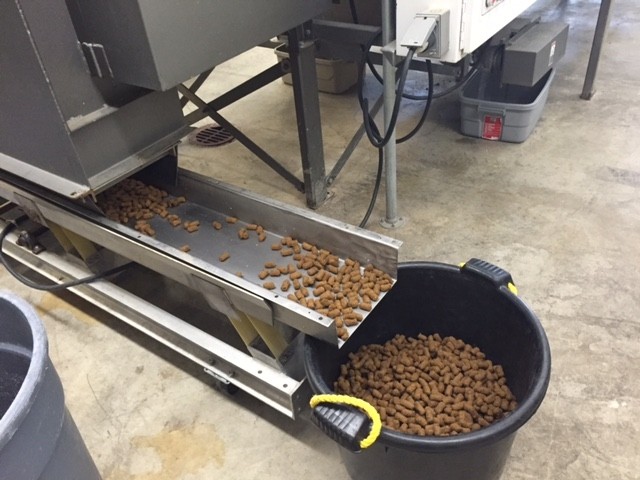
The association has been working to develop diets for several types of tuna, said Mark Albertson, director of strategic market development. The decision was made to work on tuna diets after methods of farming the fish were developed.
It recently completed a series of studies looking at the use of diets with plant-based protein sources for farm hatched juvenile Bluefin Tuna in Spain, yellowfin tuna in Panama and juvenile Bluefin tuna in Mexico, he said.
“Tuna is known to be the most challenging species to try to feed, especially with a plant-based diet because they’re so carnivorous in the wild,” he told us. “The idea of trying to feed them a soy-based diet is really difficult, but we’ve been toying with this for a while, and we fed other species that are quite carnivorous. Now that they’ve been hatching them, it seemed the right time to take a crack at it.”
The group saw some positive results with its alternative diets around the survival rate of juvenile, farm-raised fish, feed economy and feed conversion (FCR), he said.
“[The] farm raised fish [sector] is the fastest growing use of soy,” he said. “There is more soy being used around the world for aquaculture than beef production.”
Trial diets
Fish in the Panama trial were wild caught then moved to a closed system, said Alejandro Buentello, the association researcher, in his report. Fish were transitioned onto a moist pellet feed.
In the trial, fish had improved feed conversion on the formulated diet, but weight gain and condition were better with the control diet, said the researcher. However, it appears improved diet formulation may address the issue.
The fish used for the trials in Mexico were wild-caught and then raised in “fish ranches,” which is a practice in that area, said Albertson. However, most fish produced in that manner are fed dead sardines.
“We don’t think tuna ranching is sustainable,” he said. In the practice, both the tuna and the sardines have to be caught, he added.
There was a transition period to use the alternative diet, but it allowed for a 3:1 feed conversion ratio after acclimation, he said.
A sardine-based diet has an FCR of 17.8 to 14.1, according the association’s report.
“We changed them from a sardine diet to soy sausages,” he said. “We developed sausages that slowly sank, and then we mixed them with ones that floated and then [used] 100% that floated – you can see how much the fish are eating, and when they’re floating we could retrieve those [uneaten] and feed those again. There was zero waste once we were able to transition.”
By changing the feed source from dead sardines to a formulated feed, there also is the possibility of reducing disease from use of fish in the diet, he said. “We were able to eliminate any possibility of transmitting disease through the feed – if you lose a cage of 2,000 tuna that’s millions of dollars,” he added.
Fish were given the moist pellets previously tested in Panama for 54 days, again the feed conversion was better for fish getting the pelleted diet and final body weight were similar for fish getting the control and the pelleted diet, said the researcher. But, condition was slightly lower for fish getting the formulated diet.
“We’re excited with our research because, if you’re not relying on sardines, you can put your (farm) in other places,” said Albertson. The water where most fish are ranched is too cold for optimal production, he added.
In the study in Spain, the juvenile tuna were transitioned to a weaning feed after use of enriched rotifers and copepod nauplii as a first feed, he said. Seven feeds from different sources were examined in the trial.
The soy-based feed was able to outperform the others in terms of survivability of the fish, he said. “We’re new at this so we thought this was great,” he added.
In overall production, the diet was third for growth performance, reported the researcher.
Addressing dietary components
The tested diets were supplemented with a DHA-product to improve omega-3 levels and some incorporated amounts of krill oil as an attractant, said Albertson.
Additionally, to design the diets soy protein concentrate had to be used instead of soybean meal, he said. “They like protein, but soybean meal has both protein and carbohydrates [and those] can cause enteritis in carnivorous fish,” he added.
Using the concentrate removed the carbohydrates from the soy-based ingredient, he said.
“With most animal feeds we’re competing against other plant-based feeds, but when it comes to fish feeds for carnivorous fish it’s sardines and fishmeal, so we can afford to do some things with the tuna diets that we couldn’t with catfish or tilapia diets,” he said. “The economics are a little different.”
What’s next?
The transition to tuna diet research is the latest step in a long process for the association.
“We’ve really worked our way up to tuna,” he said. “We’ve worked our way up from vegetarian fish to omnivorous fish to the most carnivorous fish.”
However, work on the tuna diets is not completed. The group is hoping to get support to continue its work this summer.
“We do think this will increase demand for soybeans,” he said. “In our opinion, the reason we have the soybean checkoff is to do something that someone else isn’t already doing, and this was a big risk for us.”
Soybean producers may not see an immediate return on the work being done to design tuna diets, he said. “Tuna is a major species, and not only does it have the potential to help soybean farmers be more profitable, we think it is the right thing to do from the sustainability aspect of it,” he added.
